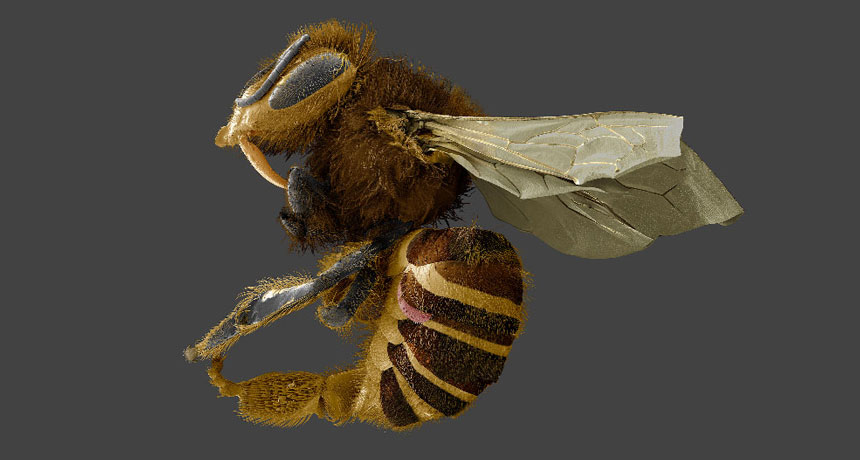- شما هیچ آیتمی در سبد خرید خود ندارید
- قیمت کل: 0 تومان
New looks at a hive’s nightmare challenge a decades-long assumption about Varroa destructor
Tests with fake bee larvae reveal that a “vampire” mite attacking honeybees may not be so much a bloodsucker as a fat slurper.
The ominously named Varroa destructor mite invaded North America in the 1980s, and has become one of the biggest threats to honeybees. Based on research from the 1970s, scientists thought that the parasitic mites feed on the bee version of blood, called hemolymph. But the mites are actually after the fat of young and adult honeybees, says entomologist Samuel Ramsey, who is joining the U.S. Department of Agriculture’s Bee Research Laboratory in Beltsville, Md
That insight might aid the largely failed efforts to develop antimite compounds for feeding to bees, says toxicologist Aaron Gross of Virginia Tech in Blacksburg. He has documented mites resisting some of the current controls and hopes for new options.
Ramsey’s rethink started with Varroa biology. For instance, the mites don’t have the more flexible body that can swell with a lot of incoming fluid or a gut specialized for elaborate liquid filtering that many other bloodsuckers do. And insect hemolymph looked to Ramsey like a weak, watery choice for exclusive nutrition.

So Ramsey spent about a year while at the University of Maryland in College Park developing artificial bee larvae from gelatin capsules that let him test how well mites survived when fed different proportions of fat from an organ called the bee fat body versus hemolymph. Mites lived for just 1.8 days on average on pure hemolymph. The only ones to survive the entire seven-day tests — though few in number — ate 50 percent or 100 percent fat.
Those tests plus other evidence show that the mites need bee fat, Ramsey and colleagues argue January 15 in the Proceedings of the National Academy of Sciences. Rather than sucking blood, the mite “is feeding on flesh more like a werewolf,” he says.
Feeding adult bees two stains, one called Nile red for the fat and a yellow uranine for hemolymph, also shows that mites are targeting adult fats, Ramsey says. Microscopic images of the mites’ multipart guts taken after feeding glowed red, the researchers found. When the parasites fed on bees with only their hemolymph stained, the mite guts looked ghostly dim.
Questions remain, but “the experiments seem to be reliable, and the results are convincing,” says Peter Rosenkranz, who studies bee health and directs the Agricultural State Institute based at the University of Hohenheim in Stuttgart, Germany.

Refocusing on fat suggests how mites damage bees in many ways, Ramsey says. The bee fat body detoxifies pesticides and, among other jobs, helps orchestrate the development of the unusually long-lived generation needed to survive winter. Damaging the organ may also reduce bees’ immune response, worsening damage from the viruses they spread, says evolutionary ecologist Lena Wilfert of the University of Ulm in Germany.
These worrisome mites reproduce when a pregnant female slips into a hive cell where nurse bees are about to seal off a larva ready to metamorphose into an adult. When that bee adult emerges, the mother mite and her daughters hitch along. They often switch to nurse bees, which have especially large fat bodies, and clamp onto an area near the organ. But the mites aren’t just riding, Ramsey says. Wound openings on bees shaped like mite mouthparts and internal damage show up in images taken by microscopists at the USDA’s imaging facility in Beltsville.
Creating those decoy larvae from gelatin capsules to study mite behavior in the lab wasn’t easy. The smallest pills still have walls too thick for mites’ teeny mouthparts to pierce, so Ramsey worked out a way to carefully replace the bottom of a pill with a film stretched to a thickness of only 15 micrometers. Rubbing the film over real bees to transfer scent eventually coaxed mites to taste the fakes. Rearing mites without bees has been a notoriously hard problem, but “I’m very, very, very bad at giving up,” Ramsey says.




